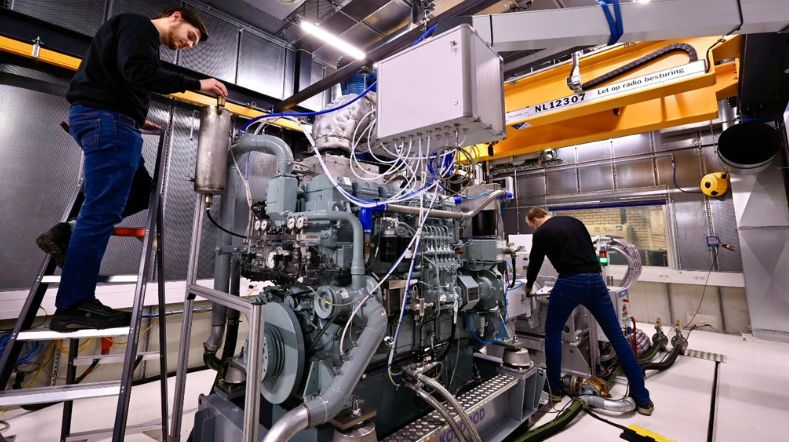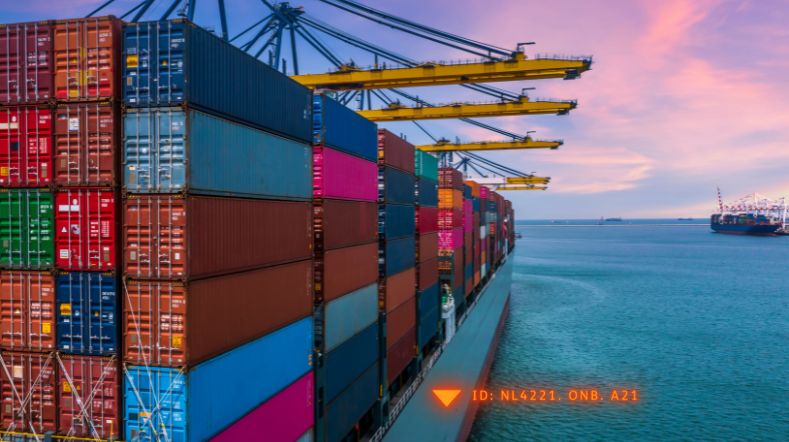
New testing facility enables safe experimentation with liquid hydrogen
Hydrogen is an essential component of a sustainable energy infrastructure, particularly in sectors where electrification is less straightforward, such as maritime, aviation industries and defence. By liquefying hydrogen, it becomes possible to transport it efficiently in large quantities. TNO possesses the expertise and infrastructure to conduct small-scale tests with this promising energy carrier. Students from AeroDelft have successfully made use of these capabilities.
Propeller powered by hydrogen electricity
AeroDelft is the first student team in the world to build a complete small-scale electric propulsion system for aircraft powered by liquid hydrogen. The setup was tested under TNO’s supervision at the TNO Ypenburg site, which is specifically equipped for experiments with liquid hydrogen.
The result: a successfully operating propeller powered by electricity from a fuel cell, fed by evaporated liquid hydrogen. A milestone for the team, and an important achievement for TNO.
‘We’ve demonstrated what’s possible with our new dedicated test lab,’ says Joke Luyten, project manager involved in the testing programme. ‘The AeroDelft case is receiving a lot of attention, but we’re also testing many other applications involving liquid hydrogen, such as maritime transport and propulsion, industrial storage, and defence applications. This is possible thanks to the flexibility of the test setup. The great thing is that various TNO units can work with it, including Mobility & Built Environment, Defence, Safety & Security, and Energy & Materials Transition.’
How do you test a propulsion system at -253 °C?
TNO has long conducted cryogenic testing with liquid nitrogen, reaching temperatures as low as -196 °C, for example to test LNG hoses. With the new liquid hydrogen testing facility, TNO takes things a step further.
For the AeroDelft students, it was essential to test their innovative propulsion system with liquid hydrogen under realistic conditions. This presents unique technical and safety challenges, such as storage at -253 °C and controlled warming to room temperature. The team had previously tested the system with gaseous hydrogen, but to validate the complete energy chain — from storage to power generation — under real-world conditions, a test with liquid hydrogen was necessary. They were able to conduct this safely in TNO’s specialised testing facility.
Hydro motion: sailing on liquid hydrogen
The TU Delft Hydro Motion team has also made use of the testing facility. The boat built by the students is equipped with a custom-made cryogenic tank, designed for the safe storage of liquid hydrogen. During the preparation phase, the high-quality tank construction and integration with the energy system were validated using the facilities and expertise of TNO in Ypenburg.
Safe experimentation under dynamic conditions
Due to the extremely low temperature of liquid hydrogen and its flammability, tests with this energy carrier require exceptional safety measures, infrastructure, and expertise.
TNO’s test site is designed for experiments with liquid hydrogen, including testing engines, valves, seals, composite tanks, and pipelines. ‘Here we can safely store liquid hydrogen and conduct tests in a controlled environment, where clients can observe the process,’ says John Zevenbergen, Process Safety Solutions specialist involved in the experimental testing.
‘The facility is equipped with advanced safety measures, including leak detection, controlled ventilation, and a special vent stack to safely release any escaping gas at height. Not a single whiff of hydrogen escapes unintentionally.’

'Together with clients, we aim to move towards a situation where these tests become part of a standard validation process for liquid hydrogen applications.'
From small-scale testing to standard practice
The current cryogenic testing facility is small-scale but represents an important first step. TNO is working with partners to explore how the facilities can grow in line with demand. ‘Together with clients, we aim to move towards a situation where these tests become part of a standard validation process for liquid hydrogen applications,’ says Richard Pijpers, business developer for Safe & Sustainable Maritime & Offshore, who sets up research consortia focused on alternative fuels for ships and offshore energy generation.
Pijpers: ‘We’ll also be able to conduct mechanical tests with hydrogen technology, for example to study wear and ageing of components. Think of tests involving variable loads on a structure, such as vibrations and pressure fluctuations. This allows us to investigate whether, for instance, valves in hydrogen storage tanks or pipelines remain sealed under dynamic conditions.’
Such realistic test setups, combining various loads, are still limited in practice, especially on a large scale. Pijpers: ‘That’s why we aim to develop targeted facilities to enable these tests for hydrogen, ammonia, and other sustainable energy carriers. And not just mechanical tests, but also electrolyser and engine tests. This is a step towards the future that we want to pursue across TNO.’
Looking for a test facility?
Are you working on the development of technology or applications based on liquid hydrogen? Would you like to test them in an environment where you can experiment safely, in a controlled and practical setting? Get in touch with us. Together, we’ll explore how our facilities can help advance your innovation.
Get inspired
TNO opens test cell for sustainable marine engines


Wind energy webinars

Ship materials and structures

The transition to sustainable shipping


Naval and Offshore Structures

